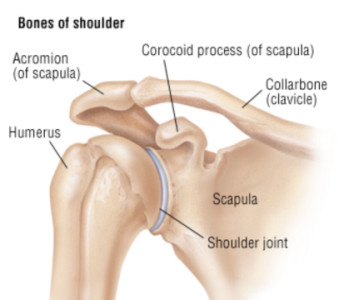Anatomy of the clavicle (collarbone)
The collarbone (also referred to as “the clavicle”) is located between the chestbone (sternum) and the shoulder blade (the scapula). The purpose of the clavicle is to connect the arm to the torso.
The clavicle lies above several important nerves and blood vessels and also the lung. When the clavicle breaks, these structures can potentially be injured.

Cause
One of the most common underlying causes of clavicle fracture is a direct blow to the shoulder (commonly seen in falling cyclists or motorcyclists).
Symptoms
Clavicle fractures can be very painful and may make it hard to move your arm. Additional symptoms that indicate a serious fracture that requires immediate medical attention include:
- A deformity or “bump” over the break
- Sagging shoulder (down and forward)
- A grinding sensation if an attempt is made to raise the arm
- Inability to lift the arm because of pain
- Bruising, swelling, and/or tenderness over the collarbone
Treatment
Clavicle fractures that are not displaced (the bone ends have not moved too much relative to each other) can be treated without surgery. You will be put on an arm sling for support and the period of immobilisation is typically 6-12 weeks. Shoulder stiffness will inevitably develop. Clavicle fractures that are displaced require surgery to prevent complications such as delayed or non-union (non healing) of the fractures.
Arm Support

A simple arm sling or figure-of-eight wrap is usually used for comfort immediately after the break. These are worn to support your arm and help keep it in position while it heals.
Medication
There are some medication that are available in our orthopedic clinic. These medications are very useful to relieve pain and swelling.
Looking For A Reliable Shoulder & Elbow Orthopaedic Specialist?
Fast Medical Attention, Transparent Fees
Make an appointment for comprehensive care for your Shoulder & Elbow problems!
